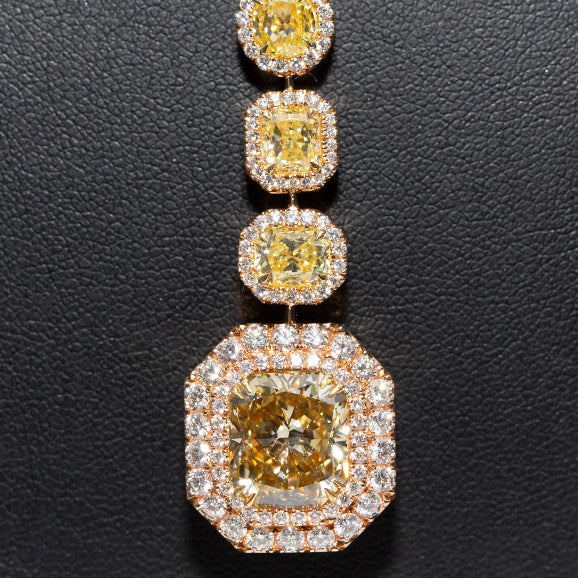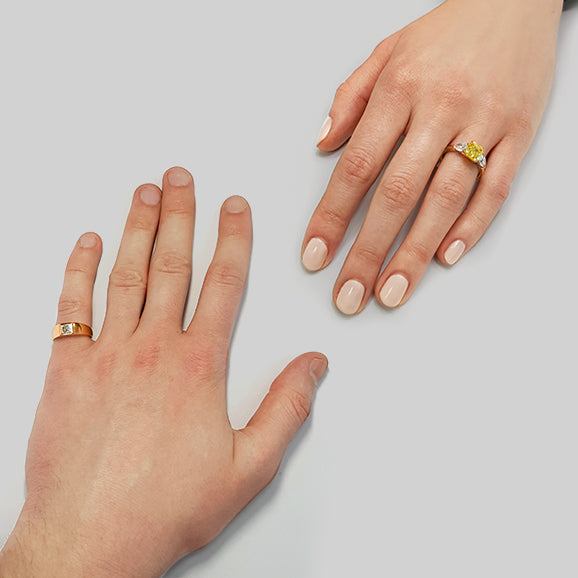Although the different names are sometimes used interchangeably, pink gold has the lowest content of copper, the metal that gives the appearance. Red gold has the highest copper content.
Because 9 or 14ct rose gold has less gold, they each have a more reddish colour than 18 or 22ct rose gold. Some jewellery makers have a blend of gold, silver and copper that is identifiable as that brand's colour.
Most rose gold is found with an 18ct rating, examples of the most common alloys for
In the UK, all jewellery made with precious metals, including rose gold that weighs 1 gram or more must be assayed and stamped with a hallmark guaranteeing its authenticity. Look out for it on any jewellery that you buy!
Most rose gold is found with an 18k rating; common alloys for rose, red and pink gold include:
18ct red gold: 75% gold, 25% copper
18ct rose gold: 75% gold, 22.25% copper, 2.75% silver
18ct pink gold: 75% gold, 20% copper, 5% silver
12ct red gold: 50% gold and 50% copper
Some consumers imagine that rose gold is more valuable than white or yellow gold. This is untrue. All rose gold with the same karat grade will have the same amount of gold as any other colour. On the other hand, because copper is a large proportion of the rose gold alloy and is an inexpensive metal, rose gold might be slightly cheaper to buy than white or yellow gold. The scrap value of any colour gold tends to be the same because the value is based upon the percentage of gold in the metal.
Rose Gold's Advantages
Rose gold is currently in style for both male and female jewellery.
Many people think of rose gold as being the most romantic of precious metals due to its pinky-red colour.
Rose gold tends to be less costly than yellow or white gold due to the relatively low cost of the copper in the alloy.
If durability is a concern, then rose gold is a reliable choice. The copper used to make the metal look red makes rose gold very hard-wearing and robust.
Rose gold looks great with all skin tones and on male or female skin.
Unlike white gold with its rhodium coating, rose gold needs no upkeep to maintain its appearance.
Rose gold will not tarnish over time;however, the copper can become darker as the years pass, causing the piece to become redder. Many people like the colour of old rose gold, associating it with antiquity and age.
Rose Gold's Disadvantages
Unlike yellow gold and many versions of white gold, rose gold is not hypoallergenic. Some people are sensitive to copper. There is no way to make rose gold without copper.
Although rose gold is currently in vogue, it is nowhere near as widely available as white or yellow gold. Unlike white and yellow gold jewellery where manufacturers often make pieces in both colours, they do not do so for rose gold.
If you love the colour of rose gold, you are not alone, but you definitely will not be part of the common herd.
The soft pinkish hue flatters all skin tones and teams well with most clothing. Rose gold does not tarnish, nor does it bend easily, it is the strong choice among gold colours.
A timeless classic that will serve you well over the years; rose gold is an excellent choice even for romantic gifts such as engagement rings and wedding bands.


